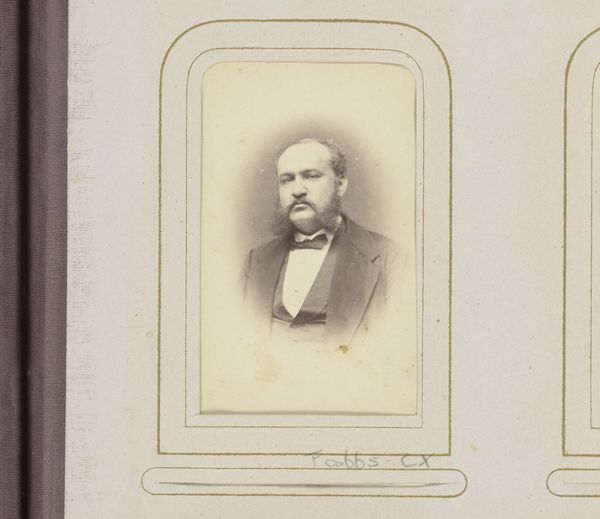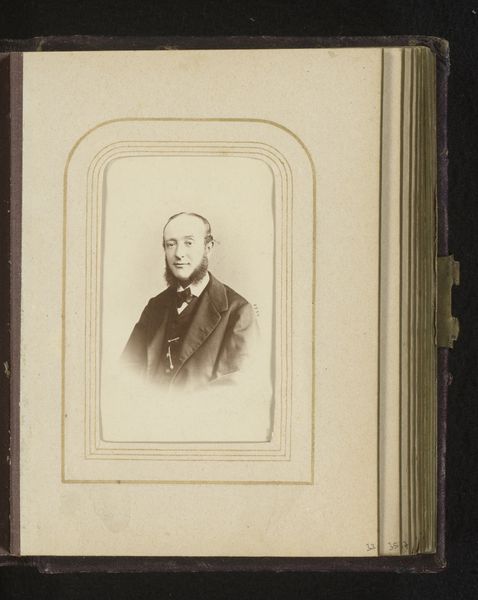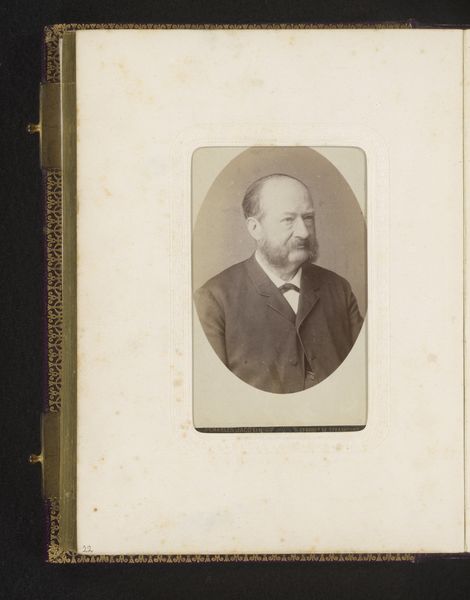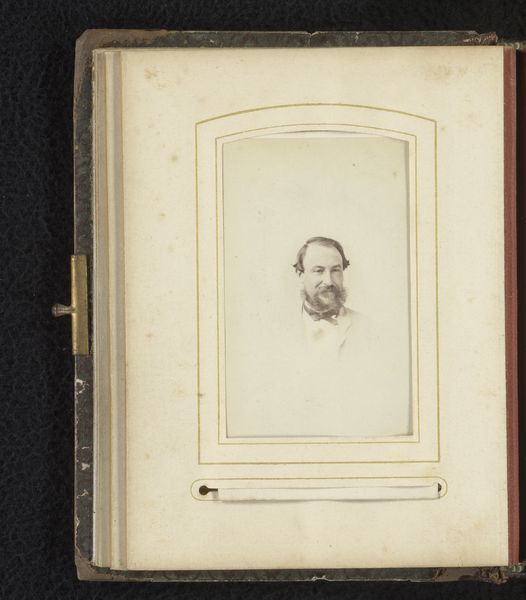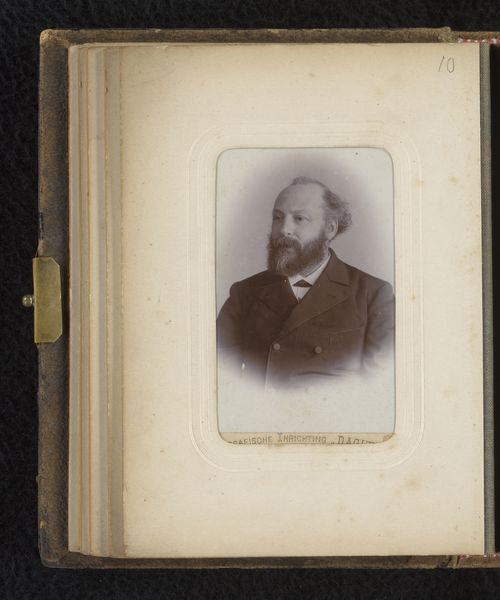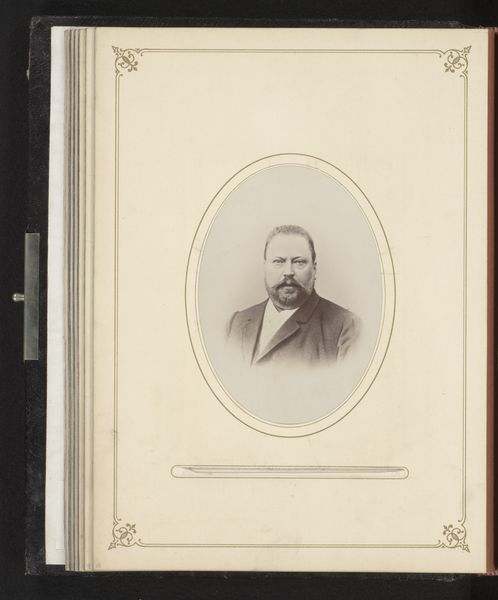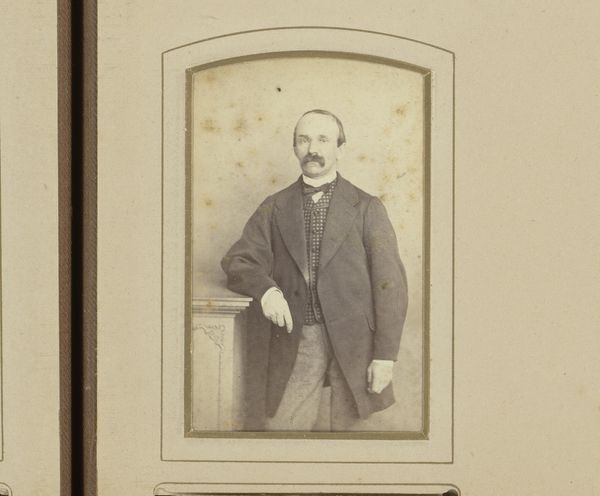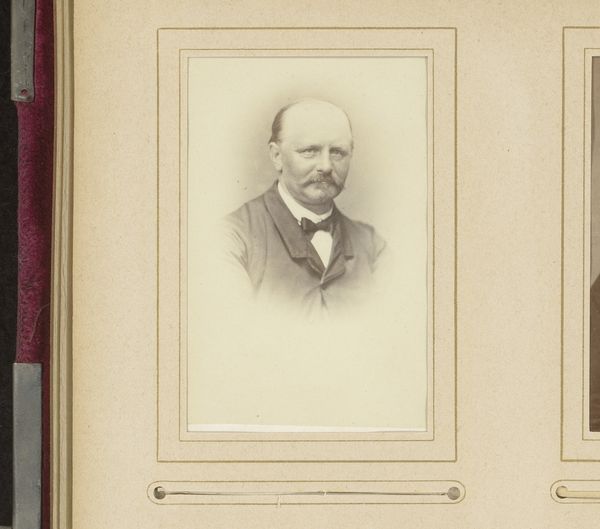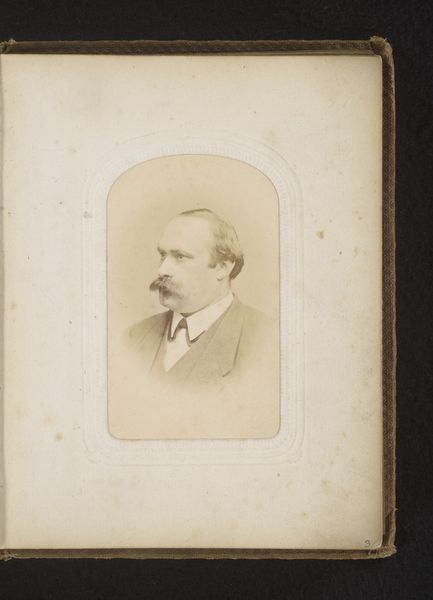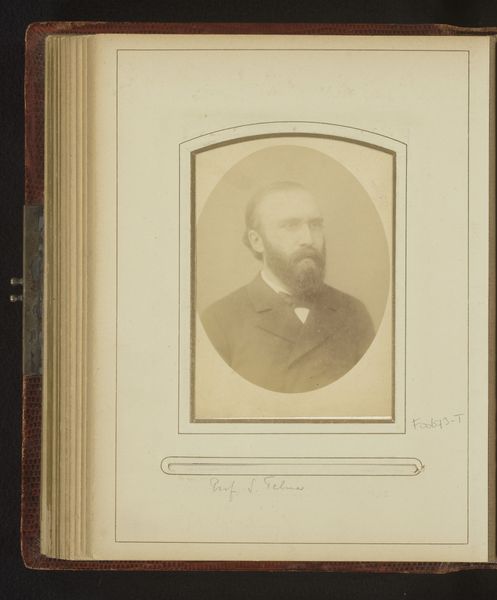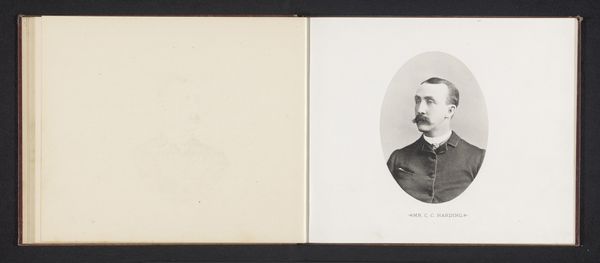
photography
#
portrait
#
photography
#
genre-painting
Dimensions: height 83 mm, width 50 mm
Copyright: Rijks Museum: Open Domain
Curator: What a fascinating find! This is "Portret van een man met snor"—Portrait of a Man with a Moustache—dating from between 1860 and 1900. It's an albumen print photograph nestled within an album. Editor: My first impression is the severe contrast in the image. It is a remarkably constrained composition. A gentleman appears somewhat bleached in stark relief against his dark suit, framed within a darkened album page. Curator: Absolutely, and albumen prints, known for their clarity and fine detail, were very popular during that time for portraiture, driven by the rising middle class. Having one’s portrait taken and stored in albums became an accessible symbol of status. Editor: The photographic clarity invites forensic viewing of minute details. But, it almost works too well: every follicle is captured under glass in a display of bourgeois earnestness. I find his symmetrical moustache distracting! Curator: But the moustache, that very feature, it’s the era encapsulated! Such grooming and photographic conventions really cemented a particular self-image as desired by a specific demographic, and propagated by photography studios. Editor: It is fascinating how such clarity offers both precision and abstraction simultaneously; our man recedes behind its trappings: coat, cravat, hirsute adornment! Curator: Photography studios acted almost as engines for crafting public identities. How subjects presented themselves was key to the commerce of such places. Editor: Though stark and posed, his eyes convey some spark, an echo, perhaps of the world beyond representation, hinting at what an attentive eye may have noticed behind rigid formal codes. Curator: The rise of photography dramatically affected portraiture. We go from unique paintings owned mostly by aristocracy, to mass-produced portraits becoming a more democratic means of controlling one's legacy. Editor: One senses in his rigid formality a certain awkwardness; caught as it were within artifice itself, between presence and representation, somewhere we remain as viewers. Curator: Very astute; in viewing photos, we are forced to contend with both what a subject intended and the ways history itself shaped the representation. A lovely image indeed. Editor: Agreed; a photograph captures fleeting expressions and historical postures that make it, if not a window onto history, a compelling mirror nonetheless.
Comments
No comments
Be the first to comment and join the conversation on the ultimate creative platform.
